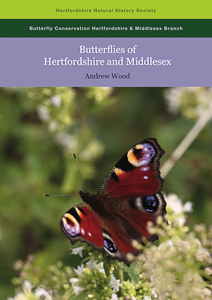 |
by Andrew Wood
Published by Hertfordshire Natural History Society, November 2016
Hardback, A4, 272 pages. ISBN: 978-0-9931217-1-5
From the publisher: Copiously illustrated with colour photographs taken in the two counties, it provides the first in-depth account of butterflies found in our area for almost 30 years. It includes present-day and historic distribution maps for all 34 resident and migrant species recorded in recent years, together with an analysis of trend data. Its 272 pages also provide an expert evaluation of changing rural and urban landscapes and their impact on butterfly populations since the 1980s. Descriptions of more than 50 publicly accessible 'top spots' for butterflies are accompanied by maps and other information on visiting them. The author, Andrew Wood, is records collator for Butterfly Conservation's Hertfordshire and Middlesex Branch and the Hertfordshire recorder for butterflies. His expertise results from a lifelong enthusiasm observing, recording and writing about butterflies and moths. Butterflies of Hertfordshire and Middlesex is published by HNHS with the welcome support of Butterfly Conservation's Hertfordshire and Middlesex Branch. The main chapters cover:
Everyone interested in seeing and appreciating butterflies in Hertfordshire and Middlesex - or in understanding their ecology at a time of significant habitat and climatic change - will want to own this attractive and scientifically important book.
The dispar team was recently asked to review "Butterflies of Hertfordshire and Middlesex", even though the book is around twelve months old, and I'm glad we were offered the opportunity. How this beautifully-produced work passed me by when it was first published remains a mystery, especially since my better half is convinced that I must surely own every work on the butterflies of Britain and Ireland!
I was immediately struck by the size of this publication; it is 272 pages of A4 and is of a high publishing standard. I was also struck by just how many images there are in this lavish work; just flicking through the book took me a good 30 minutes as I pored over the photos that this work contains.
The species descriptions are sandwiched between the introductory sections (including extensive descriptions of habitat) and one of the most extensive descriptions of sites I've seen in any work that focuses on a particular region. As someone who lives outside of Hertfordshire and Middlesex I know that I'll be referring to this latter section before too long given the amount of detail provided about each site, including both a site map and a listing of the key species found there.
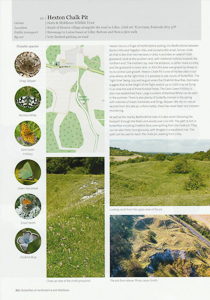 |
The species descriptions are equally thorough with distribution maps shown over three time periods (indicating changes over time, notwithstanding changing recorder coverage that can skew such visualisations), identification, lifecycle, conservation trends (distribution and abundance) and flight period. There is also an historical backdrop provided of each species, including a detailed listing of previous surveys. Tips for seeing each species are also provided.
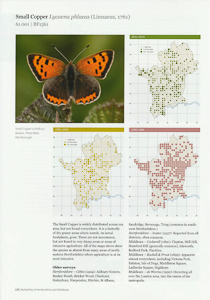 | 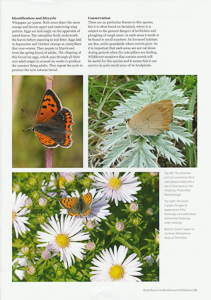 | 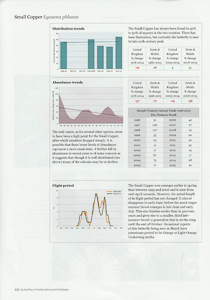 |
This review would not be balanced were I not to mention two items that I thought could be improved upon. The first is that, while there are lots of images, their quality is variable; some images are annoyingly out of focus and some cropping has chopped off the wings of some of the subject. I did wonder if the book would have benefitted from fewer images on the whole, since quite a few do not really add to or support the points made in the text and seem somewhat gratuitous. The second is that there are several errors. For example, there is a Green-veined White shown in the Small White species description, a Comma larva in the Red Admiral species description, a Comma pupa in the Small Tortoiseshell species description and also some labelling errors, such as a male Essex Skipper labelled as female and a female Orange-tip labelled as male.
Despite these reservations, it goes without saying that anyone interested in the area covered should get a hold of a copy of this book. The author is well-respected in the butterflying community and his knowledge really shines through.
The book can be ordered direct from the publisher.